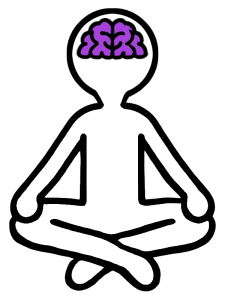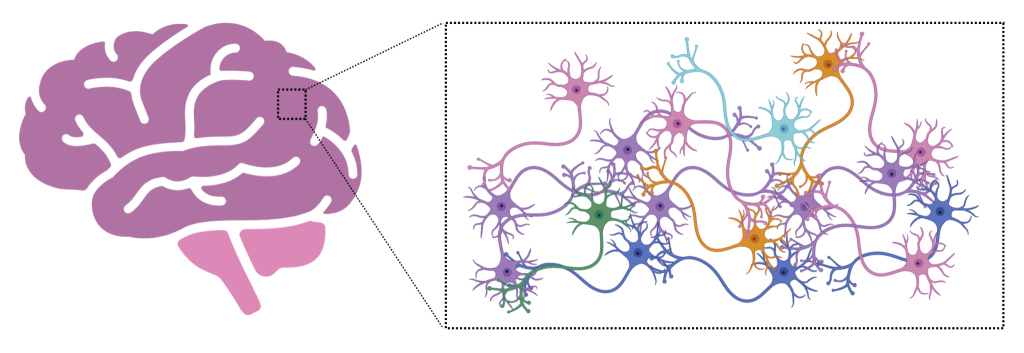Changing Your Mind with Mindfulness Meditation
Neuronal Plasticity, Mindfulness Meditation, and Addiction Recovery
by Nicholas A. Nelson, Ph.D.
Part 1 of 2
It is not uncommon during active addiction or early in recovery for people to feel that their brain is working somehow differently than before, or to feel like it is going to be impossible to break out of harmful habits and thought patterns. It can feel like the mind is damaged, or operating out of our control. This lack of control, and feeling that something is broken, can lead to a sense of hopelessness.
When we look at the brain there is some truth to this feeling – during engagement with problematic addictive behaviors and during early recovery, our brains are not wired in the same way as before these problems took root. Through months, years, or decades of repetition, addiction does change what thoughts arise in our minds and how we respond to those thoughts.
The good news is that just as the brain rewired into a new state, both responding to and then fueling addictive problems, the brain can wire again into patterns that better fuel a healthier, happier life.
Neuronal Plasticity
One of the fundamental features of our brains is the ability to adapt to new circumstances, to create new patterns of activity. Much like manufacturers can mold plastics into nearly any imaginable shape to fit nearly any imaginable need, the brain is constantly remodeling how its cells connect to each other, adapting its hardware at a cellular level to fit each individual’s unique experiences and patterns of behavior.
This ability to change, update, and reinforce our mind’s inner workings is called neuroplasticity, or simply plasticity. This constant changing and updating is what drives our ever-evolving suite of thoughts, feelings, and behaviors.
Figure 1: The brain is made of hundreds of billions of cells with trillions of connections. These connections are constantly changing throughout our lives, updating to reflect our individual experiences, thoughts, and behaviors.
Neurons that Fire Together Wire Together
The main principle of plasticity is captured in a rather famous saying within neuroscience: “Neurons that fire together, wire together.”
Neurons are the billions of cells within our nervous system that “fire” electrical signals to communicate with each other, forming complex chains or “circuits,” giving rise to nearly everything we think, feel, or do. Neurons that fire together – that is, neurons that are active around the same time – start to connect to each other more closely. This way, when we repeatedly do or encounter something, we slowly program in an increasingly automatic response to that thing: when we see a stop sign, we reach for the brakes; when we see our loved ones, we reach in for a hug; when we encounter difficult emotions, perhaps we reach for our drug of choice.
Plasticity In, Plasticity Out
This principle of plasticity evolved to protect us. It makes it easier to navigate circumstances that we regularly encounter. It makes our decisions quicker. It is the fundamental basis of learning and memory: the brain updates when it receives new information. It solidifies thoughts, feelings, and behaviors that need to be done regularly. Like riding a bike, some things don’t have to be done consciously once they’ve been wired into our brains.
Unfortunately, in the case of disorders affecting the brain, sometimes maladaptive (i.e. unhelpful or harmful) patterns get wired into the brain. In the case of addiction, we can begin to near-automatically engage in routines that actively harm us. Like riding a bike, we can seemingly unconsciously find ourselves back in situations we actively want to avoid.
The principles of plasticity don’t just drive addiction, however; they also offer us a way out. We can learn to replace old habits with new ones – just as it was possible to change our thoughts, feelings, and behaviors to reinforce our addictive problems, it is possible to change them again to new patterns that enable a healthier, happier life. The same mechanisms of brain plasticity that can entrench a person in destructive addictive patterns can drive that same person to a better life.
Brain Training with Mindfulness Meditation
One powerful approach to changing how our minds work is mindfulness, typically cultivated through a practice of meditation. Meditation has been employed for thousands of years in numerous religious and philosophical traditions for its purported benefits in cultivating self-control, emotional stability, and self-reflection. These are precisely the sorts of things we would love to employ when overcoming problematic addictive behaviors.
Mindfulness specifically refers to the ability to pay focused attention to our ongoing thoughts and feelings, without judging those thoughts and feelings, and remain focused on what is occurring in the present moment without drifting to thoughts of the past or future. More briefly: it is 1) non-judgemental 2) awareness of our thoughts and feelings, 3) focused in the present moment.
Just as repeated engagement with problematic addictive behaviors can train our brains to normalize our addictive patterns, repeated engagement with mindfulness meditation can train our brains towards better awareness of our inner worlds, with less impulsive reactions to our thoughts and feelings.
Figure 2: When engaging with problematic addictive behaviors, things we think, feel, or encounter throughout the day drive urges and cravings. Our reaction to these urges and cravings leads to engagement with those problematic behaviors, which reinforces the behavior. We are then more likely to experience emotional or environmental triggers in the future, more likely to continue to have urges and cravings, and more likely to continue this cycle.
Mindfulness training teaches us to notice our thoughts and feelings, but look at them without judgement. This training helps when we encounter emotional or environmental triggers in our daily lives, as we can then experience urges and cravings non-judgementally. How we respond can then be less reactive, experiencing the urges or cravings less intensely, and giving us time to consider options. Our behavior can reinforce in our brains that emotional or environmental triggers don’t need to be acted on – decreasing the frequency of urges and cravings, and even if they do still arise, we reinforce a less overwhelming emotional and reactive response to them.
Harnessing Plasticity for Recovery
If addiction is a form of learned behavior, which rewired our brains, then intentionally learning new behaviors and building new wiring can be an extremely valuable tool. This idea forms the foundation of numerous evidence-based approaches to overcoming addiction: cognitive behavioral therapy, support groups, and lifestyle changes all aim to introduce new, healthier patterns into the brain’s existing circuits.
However, one of the biggest challenges in breaking addictive behaviors is how they can often operate on an automatic level. When stress or cravings hit, the brain defaults to its familiar, strongest pathways, leading to us to act before we may even realize we are reacting. This is where mindfulness meditation is incredibly powerful – we can create new, strong, familiar pathways in our brain’s circuitry. We can practice; we can rewire a new normal.
In recent years, studies have shown significant promise in utilizing mindfulness-based techniques as a supplement to other recovery approaches, which we’ll discuss at greater length in the next article. We’ll dive into some of the neuroscience of addiction and meditation, followed by a look at some specifics of what these studies show when utilizing mindfulness-based practices in recovery. Finally, I’ll wrap up with a discussion of practical insights into how this practice feels when put in place, and offer some suggestions for getting started.
For now, I’d like to conclude with this:
Change is not only possible; it is a biological certainty.
Your brain is constantly rewiring. With or without mindfulness. It is rewiring today, right now. It will rewire daily, little by little, for the rest of your life. Building the right habits – in our minds and in our actions – is the key to creating the lasting changes we wish to see. In Part 2 we’ll further explore mindfulness as a tool for exactly that, building lasting brain changes and finding breaks in the cycle of problematic addictive behavior.
Acknowledgements, Part 1:
Figure 1 was made using illustrations from BioRender.com.



